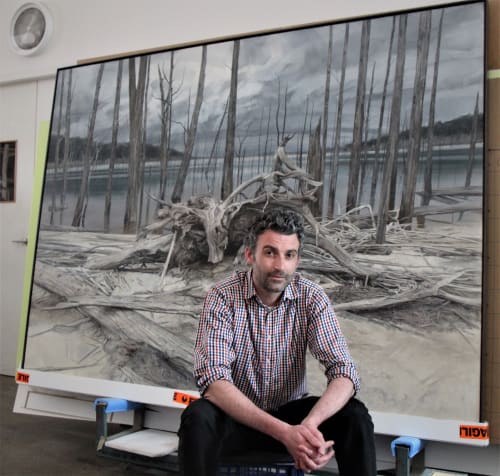There is a busy, chaotic feel to my work; a world of debris and clutter that one often finds in the Australian landscape. I have always liked certain subjects because of their unruliness and anarchic structural elements. My interest is in form, texture, pattern and the connectedness of things. Where each thing – a branch, a twig, a clod of mud - has its own presence and is distinct.
I am interested in scrutinising a subject and bearing witness to an existence. In this way the painting becomes a memorial to a thing that is disappearing.
As a painter I can only sustain myself if I have a subject. It has to be something real that I have seen and experienced. The paintings are always biographical.
I don't really see or feel any great differences between figuration and abstraction and my landscapes are as much still life's or portraits as they are descriptions of places.
Hopefully my painting is a visual response to the world today.
Nicholas Blowers describes himself as a realist painter. Broadly speaking his work is closer in sensibility to a grittier northern European painting that has its roots in artists like Van Eyck, Durer and Ruisdael. Often the landscapes he is drawn to are in a state of collapse, damaged or vulnerable, and suggest a feeling of impermanence. The cycles of growth, decay and death found in the Tasmanian landscape finds parallel in the artist’s own use of allegory; the human folly of the Savage River tailing ponds, the quite contemplation of loss and transformation reflected in the tree ruins of Lake Gordon and the sense of renewal and regeneration found in the bush interior.
He says of his painting that he is a ‘particularizer’ and explains this as a “wish to describe with particular attention what makes one thing different from another, what the writer Robert Macfarlane calls ‘Precision of Utterance both as a form of lyricism and a species of attention.’ Often there is a busy chaotic feel to his work, a world of debris and clutter that one often finds in the Australian landscape. Blowers Says “each thing: branch, twig, clod of mud has its own presence and is distinct, relying upon a sense of contingency with its fellow ‘things.’ I delight in the materialism of the natural subject and intend it to represent utterly nothing other than itself. However my whole being exists in relation to landscape, I think in terms of place, my memories are shaped within it and it has always offered ways of describing myself to myself.”
Email the gallery to register your interest in this artists practice
